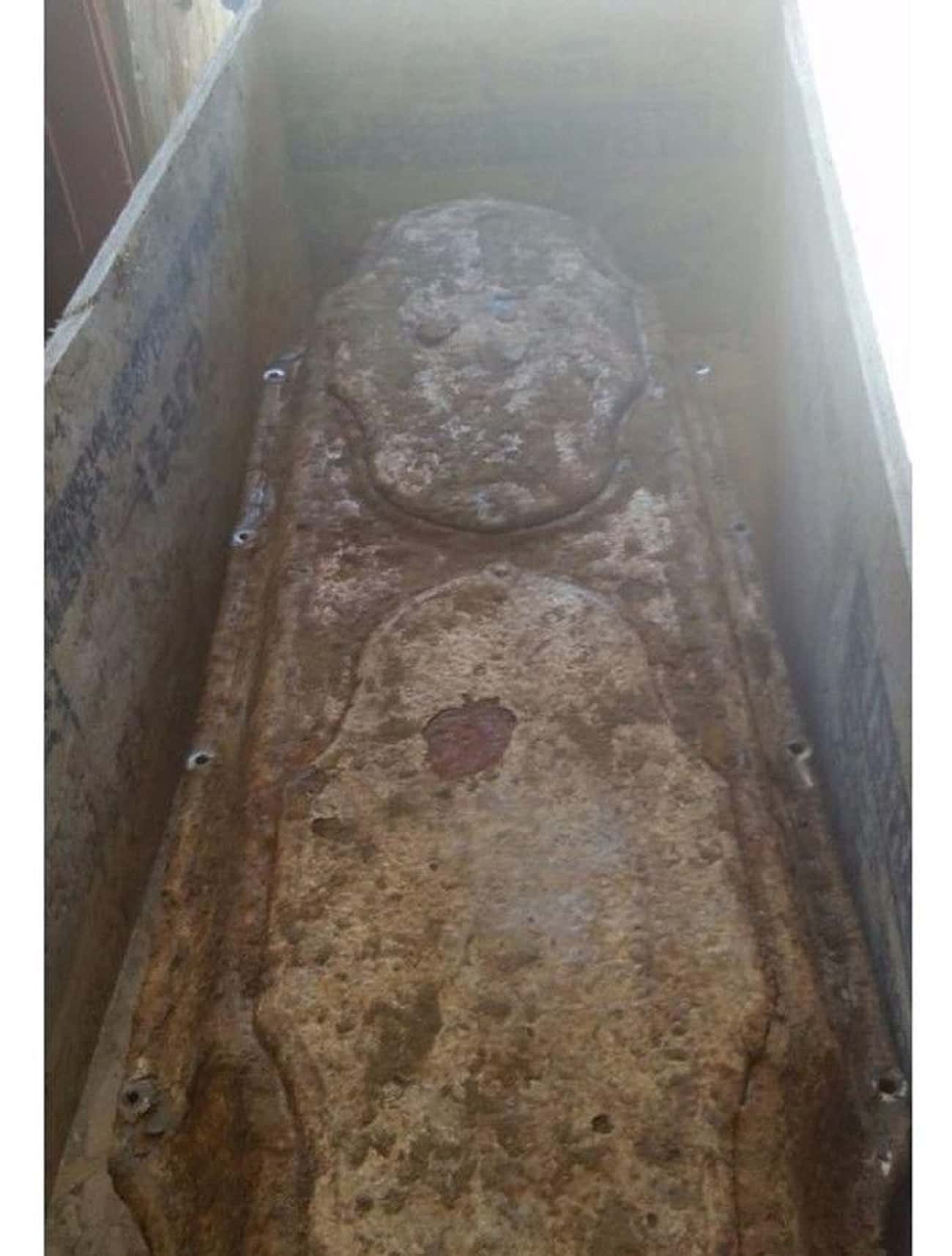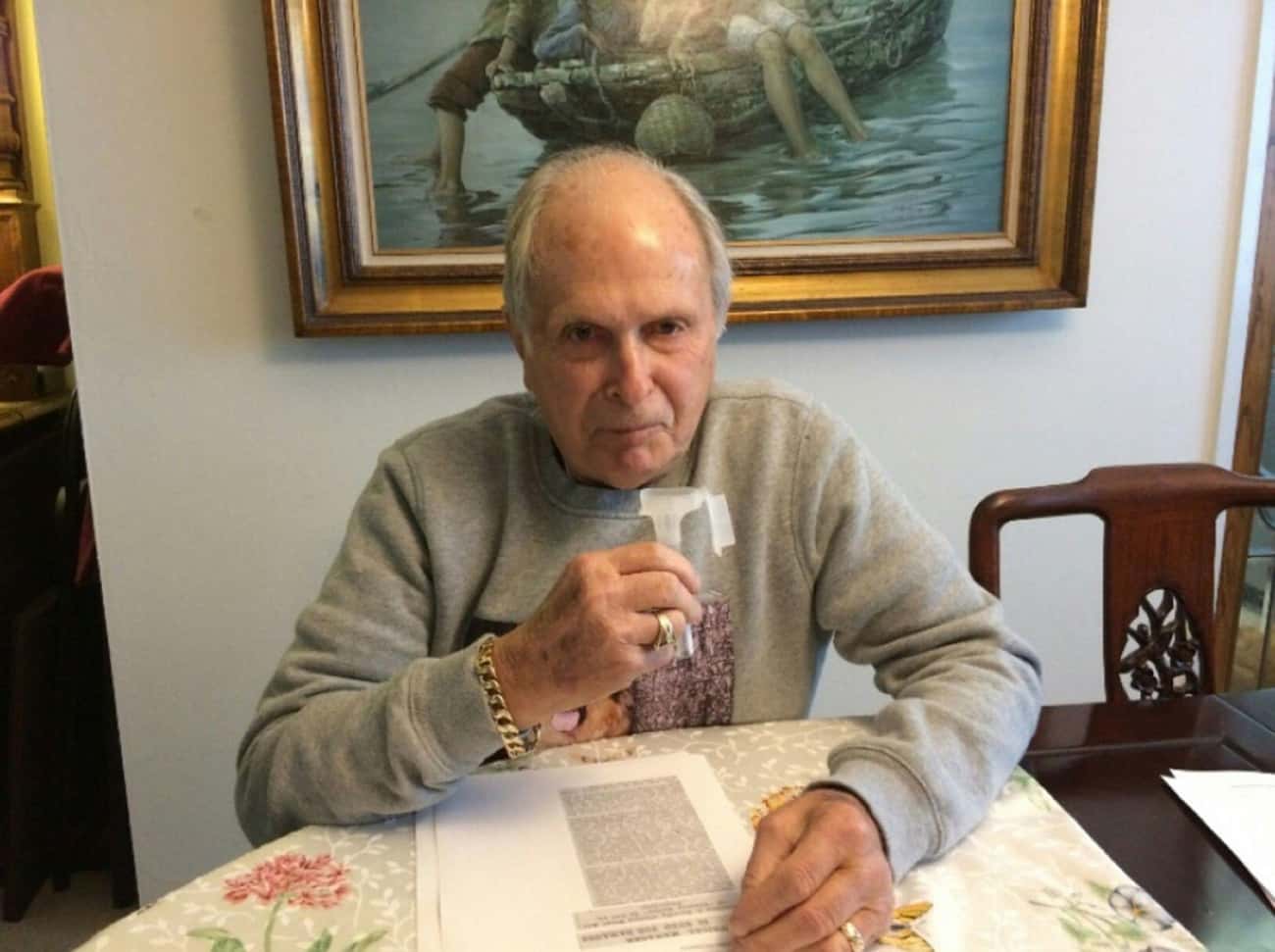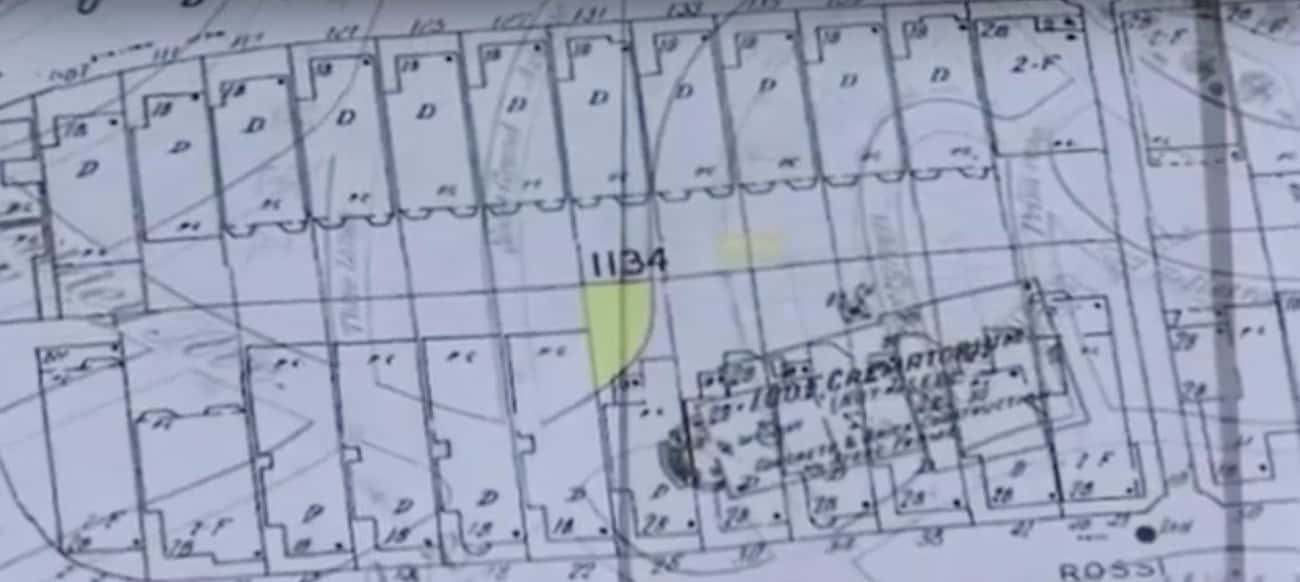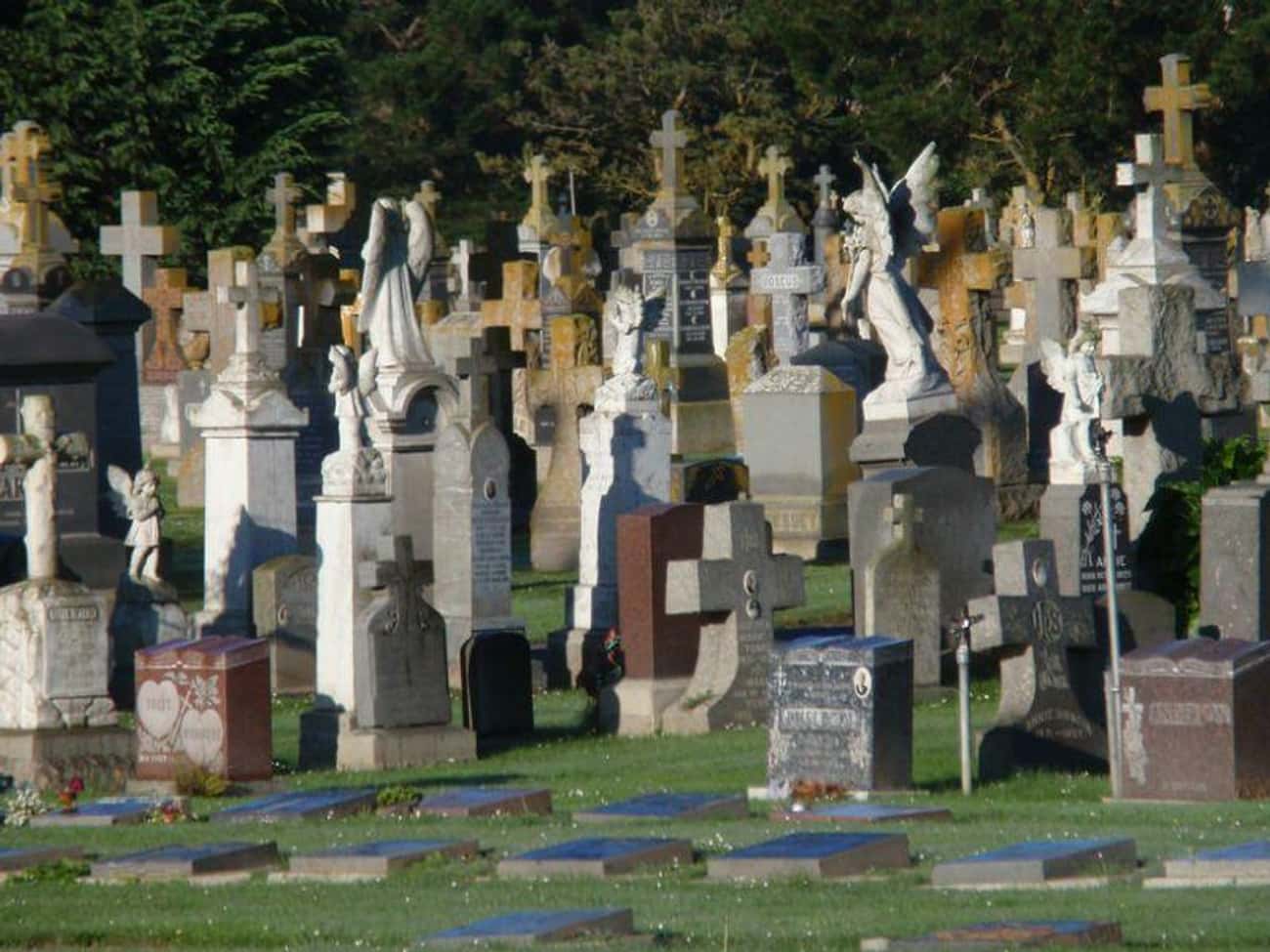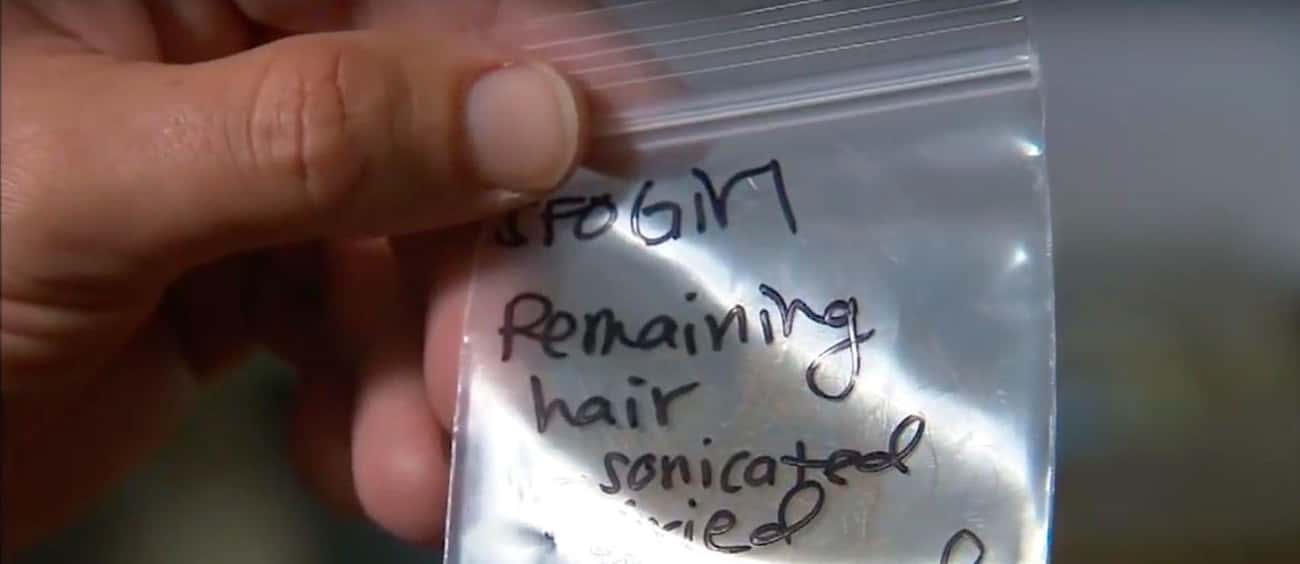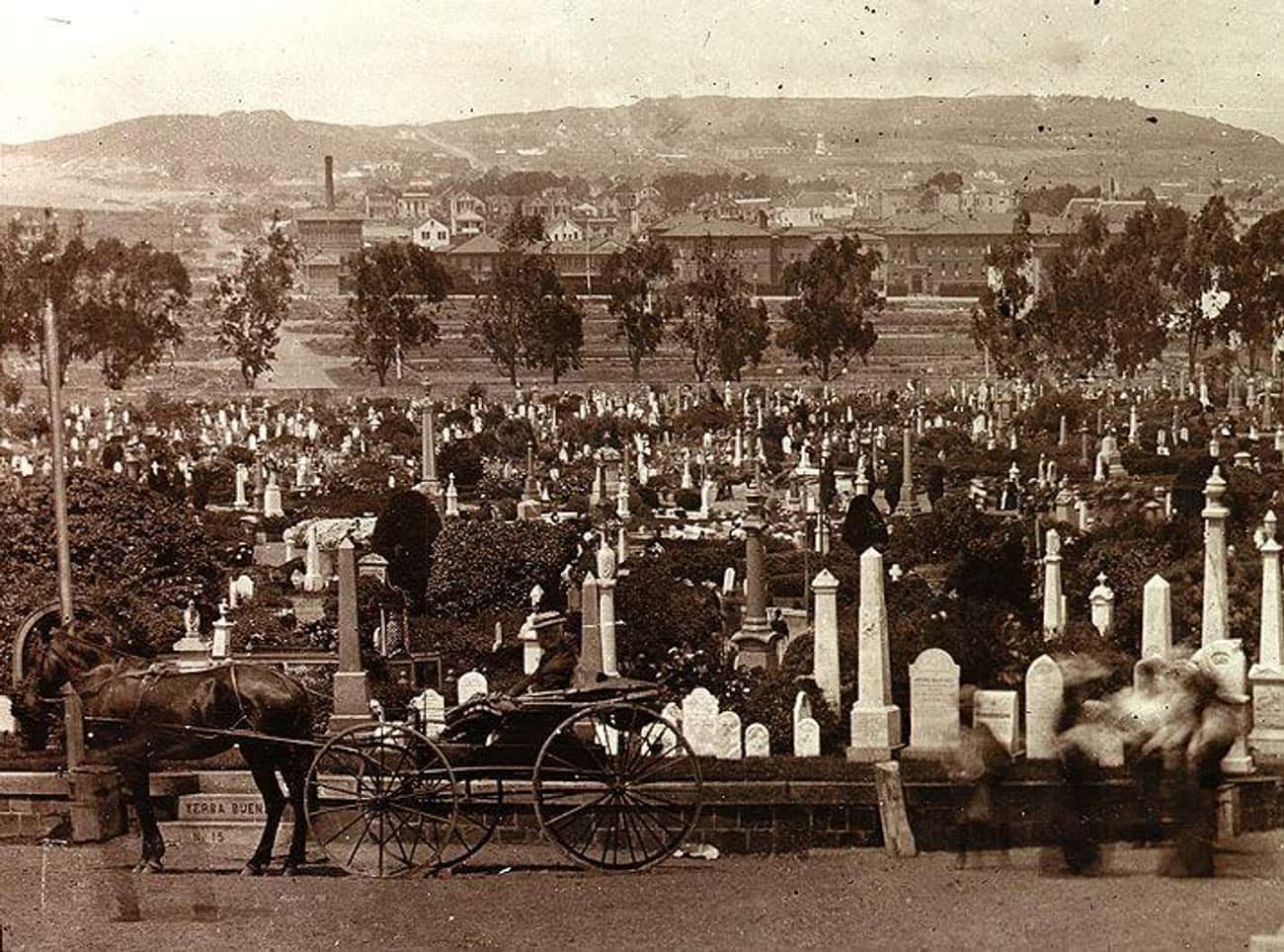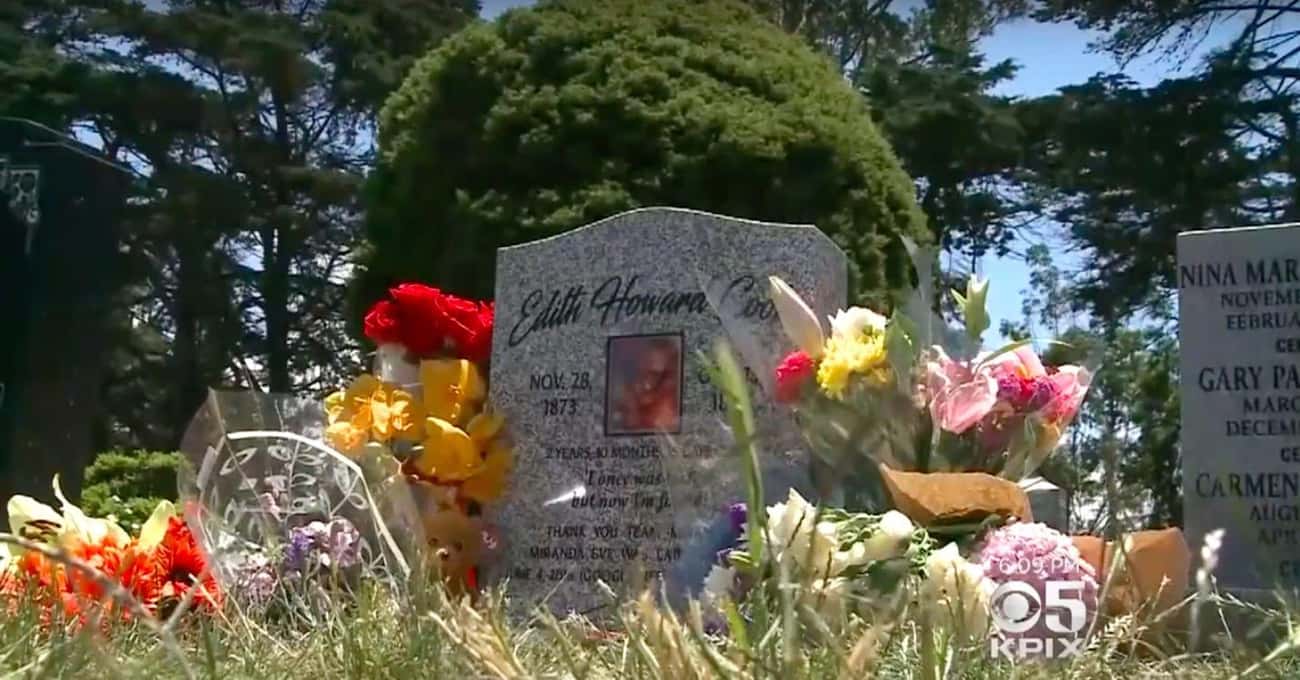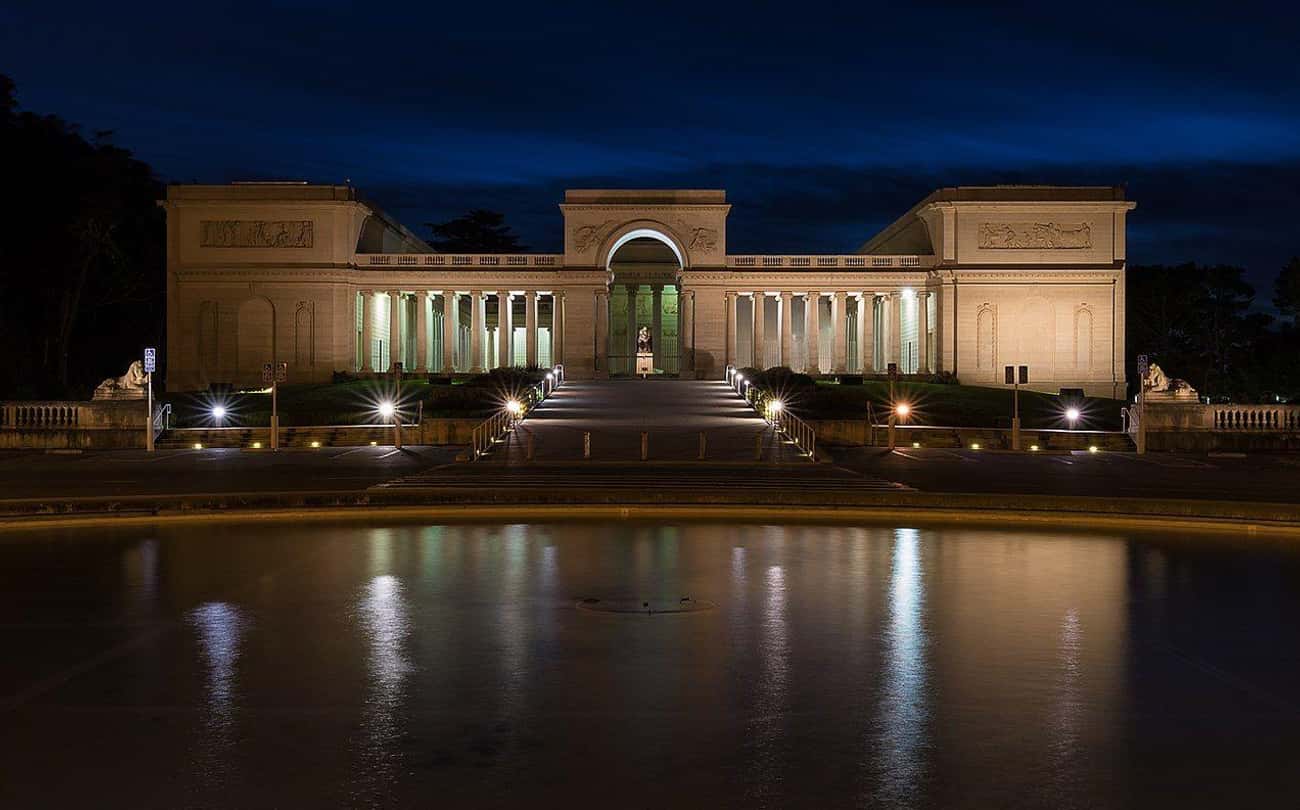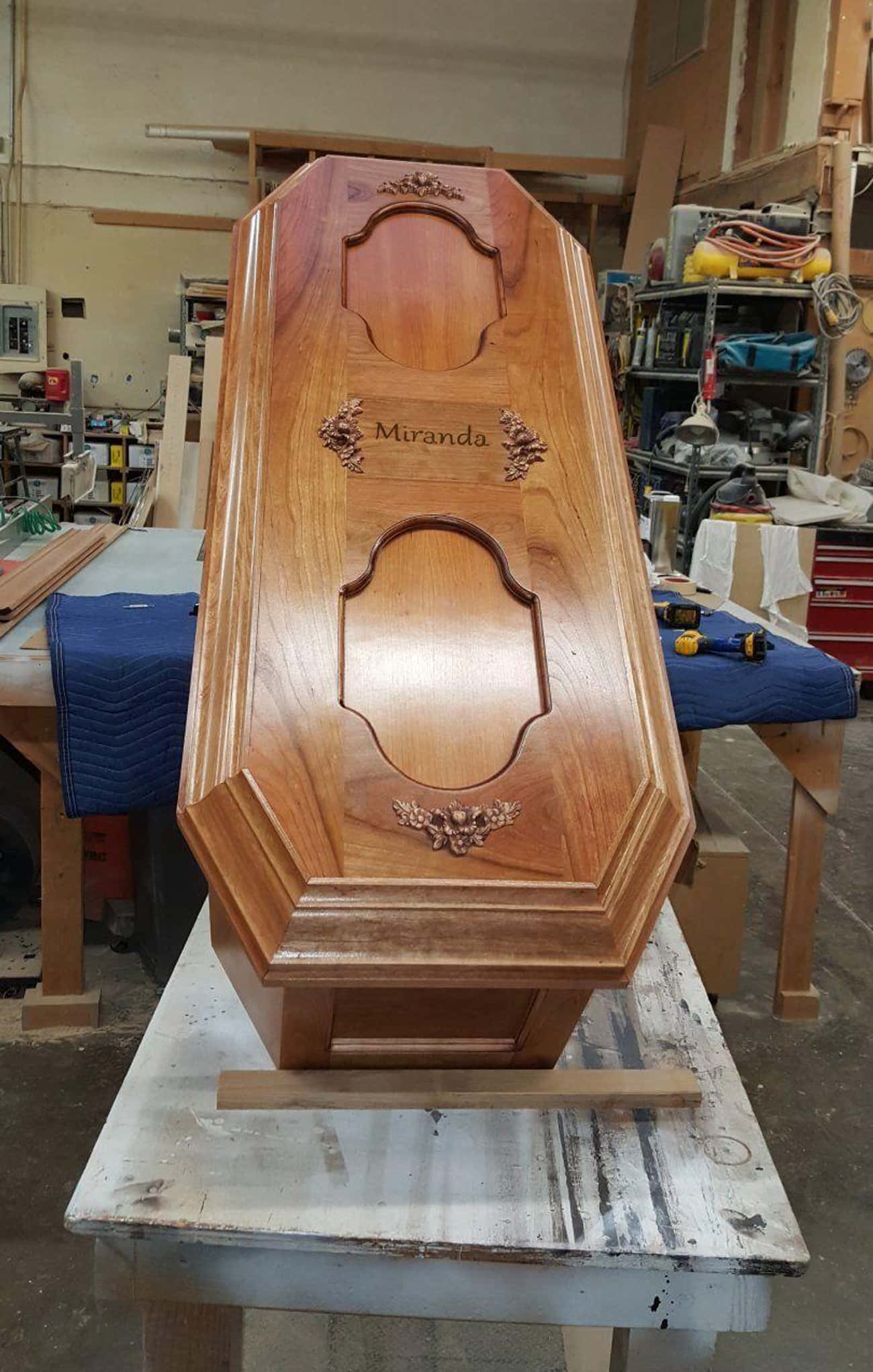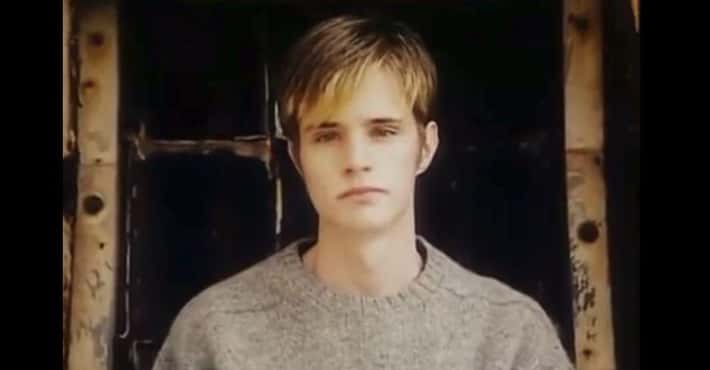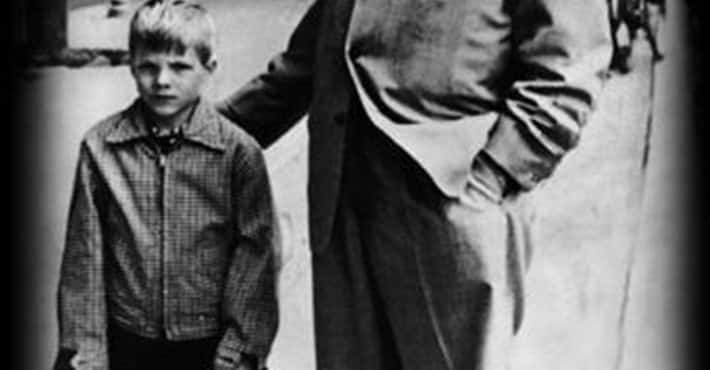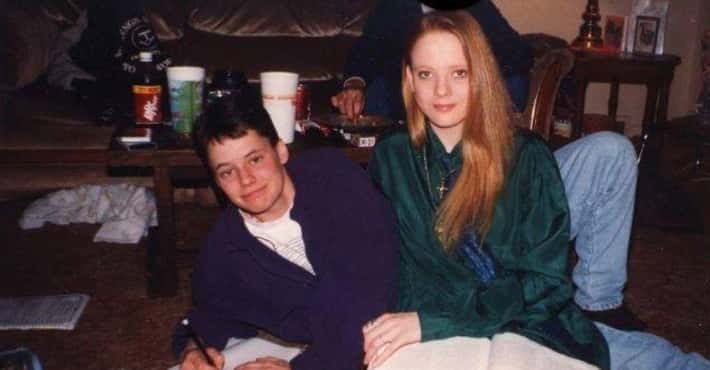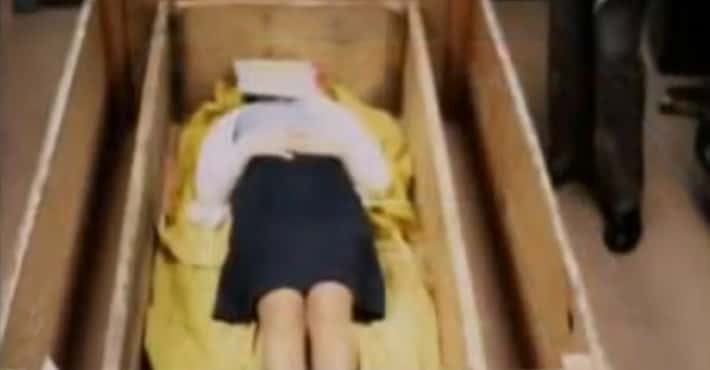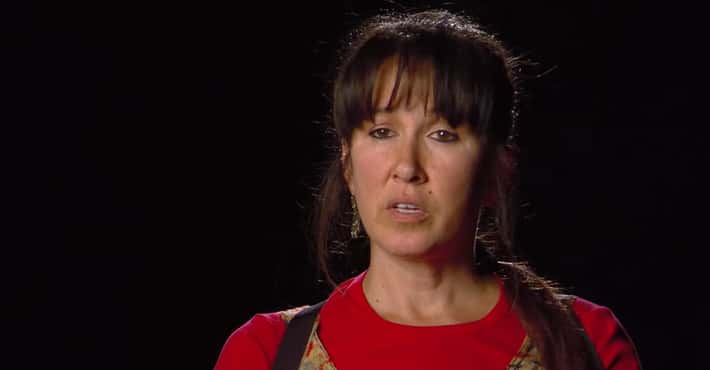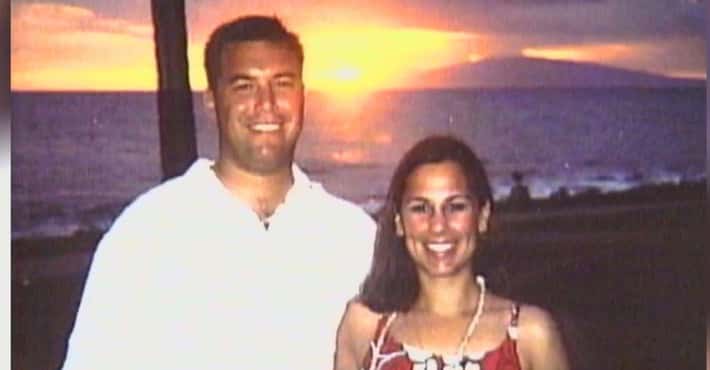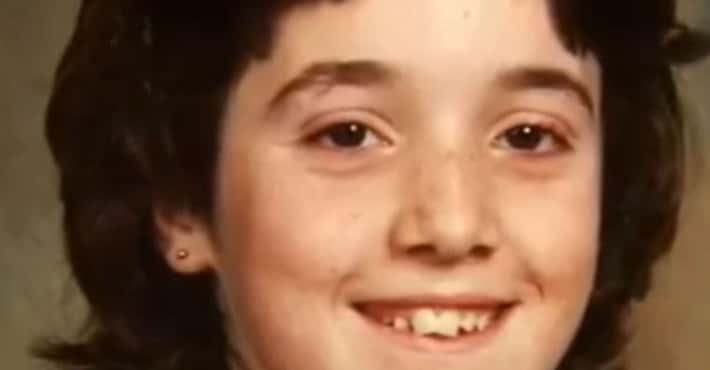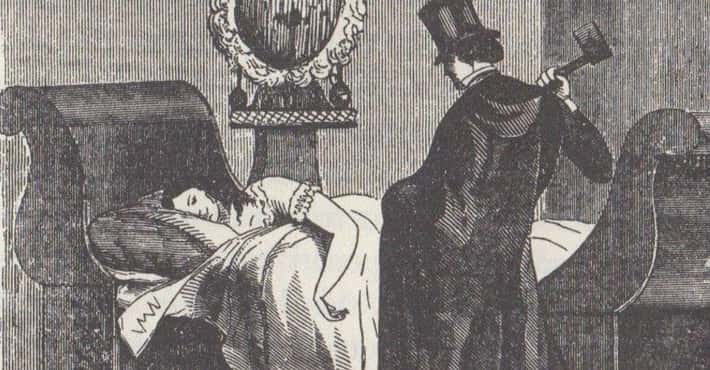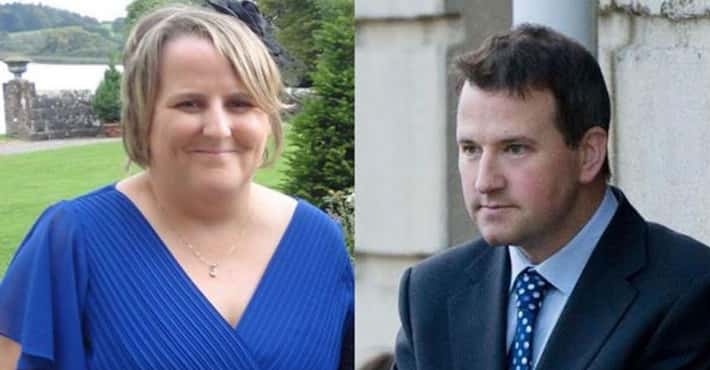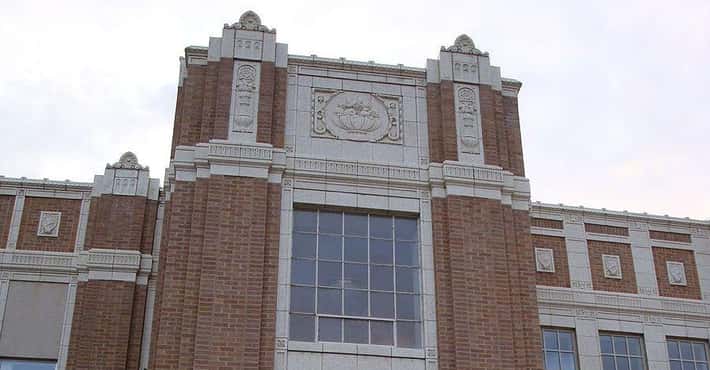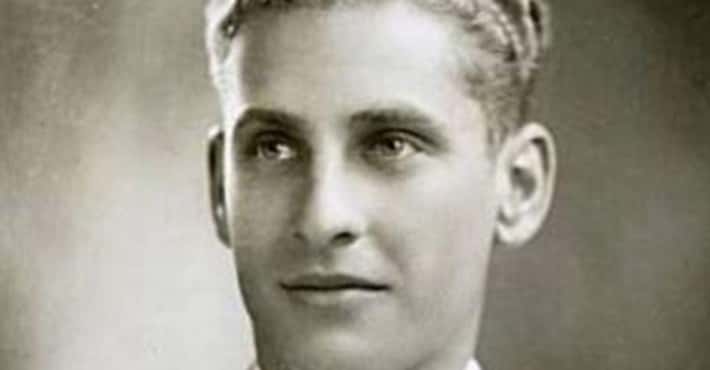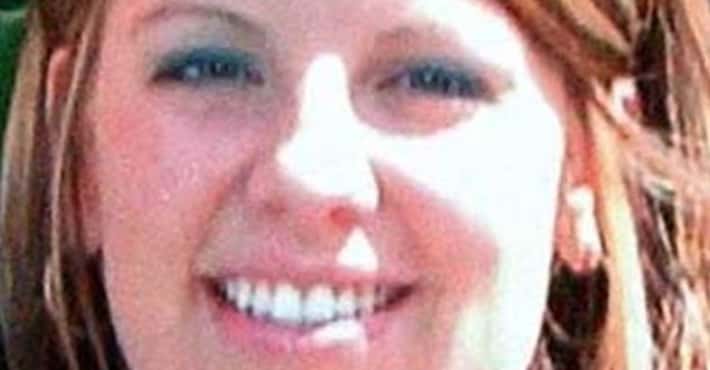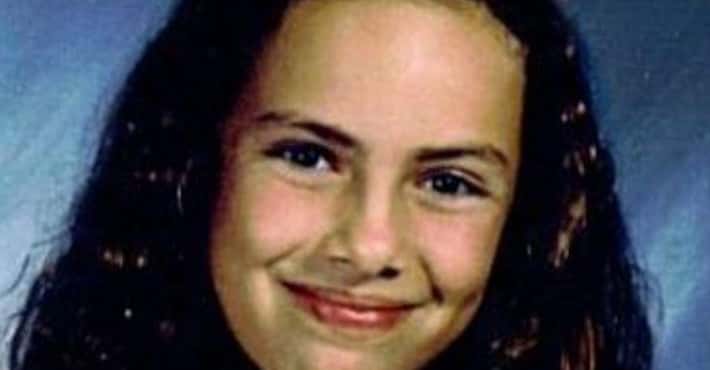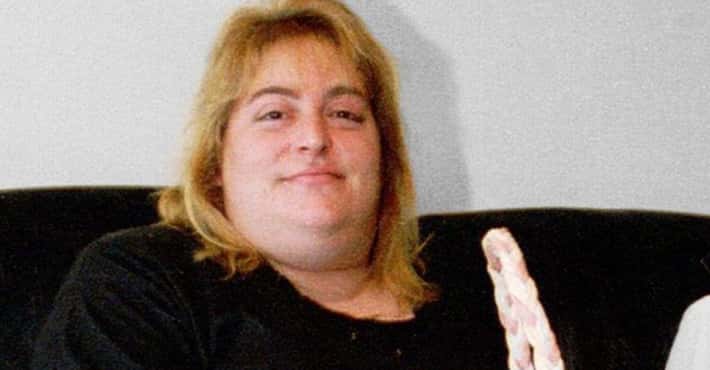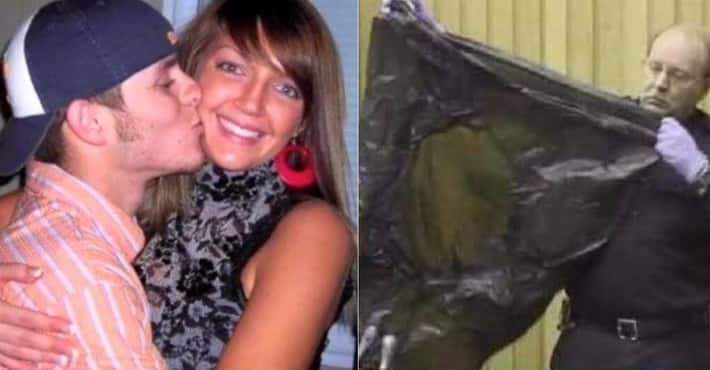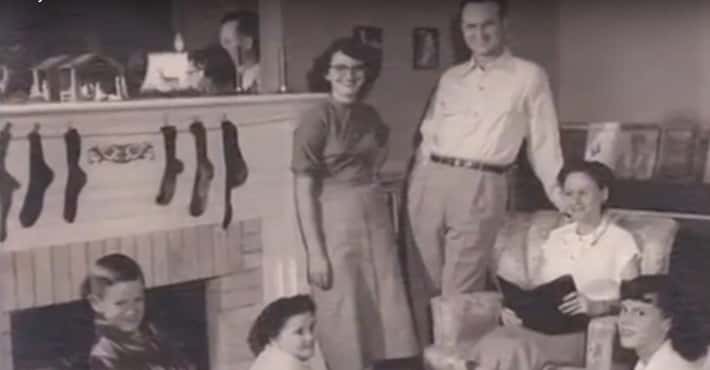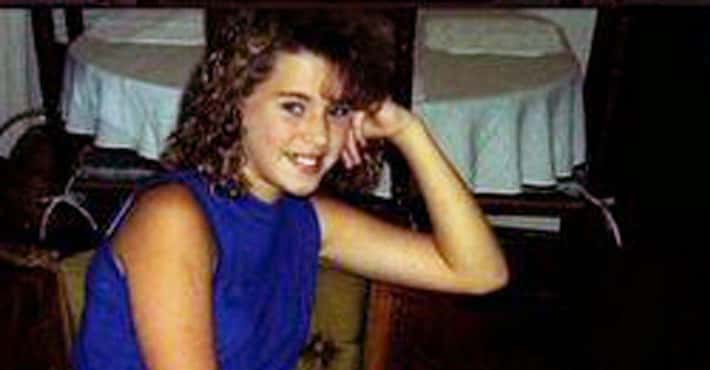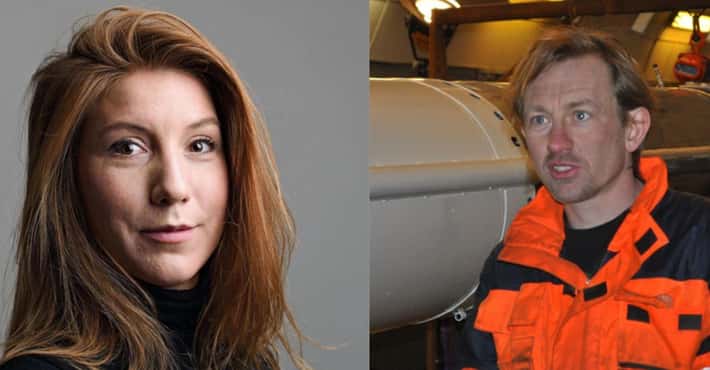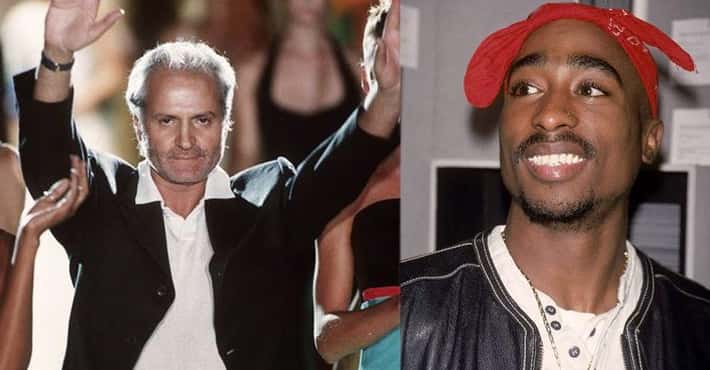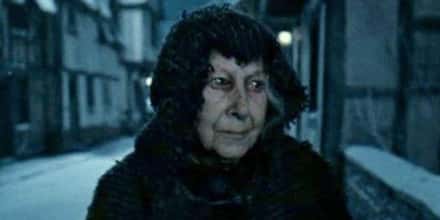Terrifying Glass Coffin Discovered In Someone's Backyard Reveals San Francisco's Morbid History
Researchers Discovered The Girl's Identity Using DNA
Photo: Courtsey Photo - Elissa Davey / via LA Times / Fair UseIn 2016, John and Erika Karner hired construction workers to remodel their Lone Mountain home in San Francisco - and the workers unknowingly excavated a tiny coffin. The Karners contacted the Office of Public Administration, who turned to genealogist Elissa Davey. Davey operates the non-profit Garden of Innocence, a project which aims to bury unidentified children. Davey and her team used preserved strands of the unknown girl's hair to perform a DNA test and determine her identity.
They discovered that the deceased child is Edith Howard Cook, the daughter of Horatio Nelson and Edith Scooffy Cook. Edith passed on October 13, 1876, at 2 years, 10 months, and 15 days old. Davey compared old plot maps of Odd Fellows Cemetery from the 1800s with current scaled street maps to determine which plot the coffin belonged to. She found evidence of the Cook family plot, where Edith's mother and father were laid to rest.
Edith Has One Living Relative
Photo: Courtesy Photo - Elissa Davey / via LA Times / Fair UseAfter discovering Edith's identity, Davey teamed up with Jelmer Eerkens, an anthropologist at the University of California. The two tracked down Edith Cook's grand-nephew, Peter Cook, via genealogical records. He is her only known living relative. Peter had never heard of Edith, so they swabbed his saliva to guarantee it was a match. Miraculously, they confirmed that Edith Cook was Peter's great-aunt.
This discovery came as a surprise to Peter, whose father passed when he was only 3 years old. As a result, he didn't know much about that side of his family.
Edith Cook Died Of A Disease Called Marasmus
Through more research, Garden of Innocence tracked down Edith's funeral records. According to the report, young Edith suffered from marasmus, a form of severe malnutrition common in the 1800s. The illness can be caused by viral, bacterial, or parasitic infections and prevents the absorption of nutrients. Eerkens speculates that Edith contracted another disease that her weakened, undernourished immune system couldn't fight.
Public records indicate that Edith also had a brother and sister, both who lived into adulthood.
The Karner Family's Backyard Used To Be A Cemetery
Photo: KTVU / via YouTube / Fair UseIn trying to figure out how little Edith Cook ended up in the backyard of the Karner family's Richmond District residence, Davey discovered that the San Francisco neighborhood used to be a cemetery. People were buried in the Odd Fellows Cemetery between 1865 and 1902 and later transferred to Colma, California, during the 1930s.
Edith was accidentally left behind in her family's plot during the massive relocation.
Edith Cook's Body And Clothes Were Preserved In The Air-Tight Casket
Photo: Courtesy Photo - Elissa Davey / via Garden of Innocence / Fair UseAccording to those who spearheaded the Edith Cook investigation, the 140-year-old body was unaffected from the elements. When researchers opened the coffin, they could easily discern the lavender placed in Edith's blonde hair as well as her white christening dress. She had been extraordinarily well-preserved due to the air-tight casket. Funerary boxes made of glass and cast iron were popular in the 1800s among wealthy families.
The little window on top, used for viewings, is unusual by modern standards. However, at the time of Edith's passing, such decor was common.
Graves Were Moved From San Francisco To Colma To Free Up Space For Housing
Photo: Tom Hilton/Flickr / via SFWeekly / CC BY-ND 2.0Hundreds of thousands of graves were moved from San Francisco to Colma in the 1930s because city developers saw housing potential on those plots of land. According to researchers, all the work was performed manually, as excavating technology did not yet exist. As a result, some bodies were simply missed. The former graves are now permanently stationed in the Greenlawn Cemetery of Colma.
According to Garden of Innocence, at least three more unidentified bodies have been uncovered in what was the Odd Fellows Cemetery. These discoveries came after Edith's exhumation and identification in 2016.
During The Relocation, Unclaimed Gravestones Were Re-purposed
Shifting Sands At Ocean Beach Reveal Buried Tunnel, Tombstones https://t.co/XfChE0rxhc pic.twitter.com/3xU9D5BWPh
— SFist (@SFist) March 1, 2016When officials relocated the graves from San Francisco to Colma, unclaimed and broken headstones were re-purposed. While the plots were moved at no cost to families, the headstones were not, causing many markers to be left behind. Reportedly, the City and County Department of Public Works restructured the abandoned stones into seawalls and gutters around San Francisco. Grave markers still occasionally wash up on the beaches.
In 2012, visitors discovered the intact marble tombstone of Delia Presby Oliver on Ocean Beach. She passed in 1890, and her gravestone was used in a makeshift seawall when the city piled tombstones and rocks on the beach in an attempt to prevent erosion.
The Search For The Child's Identity Took Researchers An Estimated 3,000 Hours
Photo: KTVU / via YouTube / Fair UseTracking the identity of anyone is challenging, but discovering the identity of an infant child in a 140-year-old lost casket is particularly difficult. According to the LA Times, Davey and her team of three spent an estimated 3,000 hours conducting research and driving the efforts to illuminate who "Miranda Eve" was, and why she was in the Karners' backyard.
They began by finding a map of Odd Fellows Cemetery and comparing it with records of the neighborhood built where it used to stand. Next, the team used the internet to locate open records of births and deaths, and they were ultimately able to trace Edith H. Cook's family tree.
She Came From A Prominent San Francisco Family
Photo: Unknown - 1899 / via Wikimedia Commons / Public DomainSeveral clues led archeologists to believe that Edith Cook came from a distinguished family. She was buried in a beautiful white dress, and her family had woven flowers into her hair and placed lavender on her chest inside the casket. Through research into her family tree, the Garden of Innocence determined that Edith's family was prominent in San Francisco in the 19th and 20th centuries.
Extensive research revealed that the Scooffy's - family members on Edith's mother's side - arrived in San Francisco during the Gold Rush. These Greek immigrants were California pioneers. On the Cook side, Edith's father operated a leather-belting business, which was passed down through generations until the 1980s. Both Horatio and Ethel were well-respected within the community, and Ethel was revered as a beauty.
Edith Finally Received A Proper Burial And New Gravestone
Photo: KPIX CBS SF Bay Area / via YouTube / Fair UseEdith was originally reburied under the name "Miranda Eve." Her 1800s-era casket was placed inside a new and slightly larger wood coffin with a bouquet of flowers on top. After researchers discovered her identity, Edith was laid to rest in Colma's Greenlawn Cemetery.
Davey attended Edith's 2017 memorial along with Cook's grand-nephew, Peter Cook. Many local residents came to show their support, and those who want to know more are encouraged to research Edith Cook - her gravestone literally reads "Google me."
The Karners Claim To Have Heard A Child's Footsteps In Their Home Before The Coffin Was Discovered
For a number of years leading up to the discovery of the coffin, the Karners reported that on numerous occasions, they heard what appeared to be a toddler's footsteps coming from the floor above them. Erika Karner, who grew up in the house and has two daughters of her own, explained how she and her husband "know very well what a toddler sounds like, and it wasn't [their] kids."
Adding another element of the bizarre to the story is the fact that construction workers who had been remodeling the house claimed to have heard the unexplainable footsteps as well. However, once the coffin was removed from the yard and reburied, the footsteps reportedly disappeared.
Edith Cook Was Far From The Only Body Left Behind
Photo: Frank Schulenberg / via Wikipedia Commons / CC BY-SA 4.0Since the mass relocation of graves was carried out from 1929 through 1935, there have been numerous occasions during which additional forgotten graves have been rediscovered. One of the first - and perhaps most shocking - of these discoveries was made during the remodeling of the Gleeson Library, which had been constructed over a former Masonic Cemetery. During this accidental exhumation, nearly 200 bodies were found when construction workers plowed directly into a hidden mausoleum.
Another discovery was made in 1993 at the Legion of Honor museum when the site was undergoing renovations. Here workers stumbled upon approximately 750 bodies that had been buried in what was once the Golden Gate Cemetery. A photographer by the name of Richard Barnes happened to be present during the resulting excavations and published a compelling collection of images from the site.
When Bodies Were Moved, They Didn't Stay In Their Original Caskets
When cemeteries around San Francisco finally began to comply with new city ordinances requiring that graves be relocated, they ran into some unique challenges. First, not all of the recovered bodies were in funerary boxes, as caskets were not required for burial at that time. And those that were in caskets were found in varying states of decomposition.
As a result, remains would be placed into new caskets or small boxes, depending upon the state of decomposition that they had reached - often somewhere between bone and dust. To make matters more complicated, this mandatory exhumation wasn't free. According to the Planning Department documents from the 1950s, a new burial box could cost anywhere from $.08 to $2.75, depending upon the amount of space required to store the remains.
Garden of Innocence volunteers crafted a new, personalized funerary box for "Miranda Eve," which they lined with purple felt and yellow flowers. Collectively, the non-profit spent nearly $10,000 to identify and rebury Edith H. Cook.


